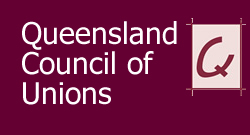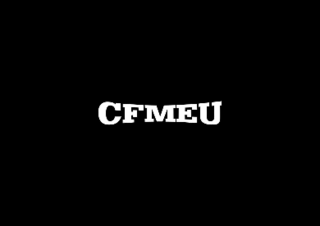Related Research Articles

William Guthrie Spence, was an Australian trade union leader and politician, played a leading role in the formation of both Australia's largest union, the Australian Workers' Union, and the Australian Labor Party.
The Australian Workers' Union (AWU) is one of Australia's largest and oldest trade unions. It traces its origins to unions founded in the pastoral and mining industries in the late 1880s and it currently has approximately 80,000 members. It has exercised an outsized influence on the Australian Trade Union movement and on the Australian Labor Party throughout its history.
The 1890 Australian maritime dispute was an industrial dispute that began on 15 August 1890 when the Mercantile Marine Officers' Association directed its members to give 24 hours notice to their employers after negotiations broke down with the Steamship Owners' Association of Victoria over longstanding pay and conditions claims. Industrial action quickly spread to seamen, wharf labourers, then gas stockers. Coal miners from Newcastle, Broken Hill, and even New Zealand were locked out after refusing to dig coal for non-union operated vessels. By September 1890, 28,500 workers were on strike.

The Queensland Council of Unions (QCU) is a representative, an advocacy group, or peak body, of Queensland trade union organisations, also known as a labour council, in the Queensland, Australia. As of 2020, 26 unions and 13 regional branches were affiliated with the QCU. The QCU represents unions covering around 350,000 Queensland workers. It is affiliated with the Australian Council of Trade Unions (ACTU). Its offices are located in the suburb of South Brisbane, Queensland. As a peak body for the Queensland trade unions, the objective of the QCU is to achieve industrial, social and political justice for Queensland workers. The management structure of the QCU is made up of a committee of management and an executive of representatives comprised from affiliated unions.

The Construction, Forestry and Maritime Employees Union (CFMEU) is the largest union in construction, forestry, maritime, textile, clothing and footwear production. The CFMEU is affiliated with the Australian Council of Trade Unions and the Australian Labor Party.

The Northern Amalgamated Workers' Union (AWUNZ) is a trade union in New Zealand. It is one of three autonomous unions, with the Southern Amalgamated Workers' Union, and the Central Amalgamated Workers' Union, who operate nationally as the Amalgamated Workers' Union.
The National Amalgamated Union of Labour (NAUL) was a general union in the United Kingdom.

The Queensland Shearers Union was one of the first Australian unions, founded in the latter half of the nineteenth century. The union was instrumental in the development of the 1891 Australian shearers' strike, seen today as a key development in the Australian labour movement. Together with other unions the Queensland Shearers Union was the genesis of the Australian Workers' Union.

Gilbert Stephen Casey was a trade unionist, agitator of the early Australian labour movement and a utopian socialist.

Donald Macdonell was a politician, trade unionist and shearer in New South Wales, Australia.
James Morton Toomey was an Australian trade unionist.

Francis Walter Lundie was an Australian trade unionist, long serving Councillor for Port Adelaide and the corporation of the city of Adelaide, board member of the Royal Adelaide Hospital, the Royal Zoological Society, the Port Adelaide literary society, The Worker and other newspapers, member of the Royal Commission into the South Australian pastoral industry 1927.

The Federated Ironworkers' Association of Australia (FIA) was an Australian trade union which existed between 1911 and 1991. It represented labourers and semi-skilled workers employed in the steel industry and ironworking, and later also the chemical industry.
The Federated Moulders' (Metals) Union of Australia (FMMUA) was an Australian trade union which existed between 1899 and 1983. It represented moulders – skilled tradesmen who fabricated the moulds for casting metal products in foundries. In spite of only organising within a single skilled occupation, which kept total membership low, the vital position of moulders in major industries such as mining, manufacturing and the railways, ensured that the union remained industrially powerful with a reputation for being highly militant.

Fallon House is a heritage-listed trade union office at 1 Maryborough Street, Bundaberg Central, Bundaberg, Bundaberg Region, Queensland, Australia. It was designed by David Ballinger Goodsir and Harold James Carlyle and built in 1953 by Llewellyn Herbert Edwards. It was added to the Queensland Heritage Register on 7 December 2012.

The Socialist Labor Party was a socialist political party of Australia that existed from 1901 to the 1970s. Originally formed as the Australian Socialist League in 1887, it had members such as George Black, New South Wales Premier William Holman and Prime Minister Billy Hughes.
The Notts Trades Council, formally known as the Nottinghamshire Nottingham and Mansfield Trades Council, brings together trade unionists in Nottinghamshire, in England.
The Australian Shearers' Union was a significant but short-lived early trade union in Victoria and southern New South Wales. It was formed on 12 June 1886 at a public meeting at Fern's Hotel, Ballarat, to resist a proposed reduction of shearing rates in Victoria and New South Wales, with David Temple as secretary and William Spence as president. The union was headquartered at Creswick in Victoria. A Melbourne branch was formed in July. By November 1886, it claimed 5000 members: 1500 in Victoria and 3500 in southern New South Wales. Having sought to amalgamate with the various New South Wales unions from an early stage, it merged with the smaller Wagga Shearers Union and Bourke Shearers Union to form the Amalgamated Shearers' Union of Australasia in January 1887.

David Temple was an influential early Australian trade unionist.
References
- ↑ "Amalgamated Shearers Union of Australasia (1887 - 1894)". Australian Trade Union Archives. Retrieved 5 January 2020.
- ↑ "General Labourers Union of Australasia (1891 - 1894)". Australian Trade Union Archives. Retrieved 5 January 2020.
- ↑ "South Australian Shearers Union (1886 - 1888)". Australian Trade Union Archives. Retrieved 5 January 2020.
- ↑ "Moree Shearers Union (1886 - 1888)". Australian Trade Union Archives. Retrieved 5 January 2020.
- ↑ "History". Australian Workers' Union. Retrieved 5 January 2020.
- ↑ "Shearers". Forgotten Trades: selected records of early Australian trades. Australian National University Archives. Retrieved 5 January 2020.